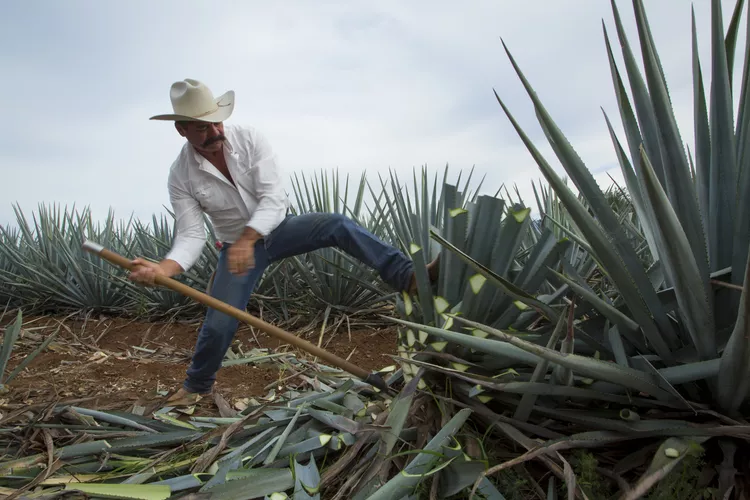Overview
Tequila is the most famous Mexican drink, but all three of these beverages are widely consumed in Mexico. They are all made from the agave plant, known as maguey in Mexico.
Agave or Maguey
Agave, sometimes referred to as the “Century Plant” in English, is prevalent throughout Mexico and the Southwestern United States. Its applications are incredibly diverse: it has been utilized for its fiber, food, and in ancient times, the thorns served as needles and for ceremonial purposes. Recently, the sap, called aguamiel, has been transformed into agave nectar—a natural sweetener with a low glycemic index. However, its primary use throughout history has been to create alcoholic beverages.
Tequila and Mezcal
Mezcal can be produced from various agave varieties, though most mezcals available commercially are made from Agave espadin. The process for producing mezcal involves roasting, crushing, fermenting, and distilling the heart of the agave plant, known as the piña.
A popular saying in Mexico reflects the cultural significance of mezcal:
Para todo mal, mezcal
Para todo bien también.
This translates to: “For all hardships, mezcal; and for all good fortune as well,” suggesting that mezcal is suitable for any occasion.
Mezcal is still crafted in traditional ways in many regions of Mexico and is exported globally. However, none is as renowned as Mezcal de tequila.
Tequila, on the other hand, is a spirit made exclusively from a specific agave plant, the blue agave or Agave Tequilana Weber. It is produced solely in the region of western Mexico around Santiago de Tequila, Jalisco, located about 40 miles (65 km) northwest of Guadalajara. Over 90,000 acres of blue agave are cultivated in this region, recognized as a UNESCO World Heritage Site.
Tequila has evolved into a national symbol of Mexico. While it has gained popularity among party-goers seeking quick intoxication, premium mezcals and tequilas have found favor with those possessing a refined palate. The highest quality tequilas carry the label 100% agave, indicating that no other sugars have been incorporated.
Visiting Tequila, Jalisco
A visit to Tequila allows one to explore the history and production of tequila. Several prominent distilleries offer tours. A favored method of travel to Tequila is via the Tequila Express train from Guadalajara. The train journey takes approximately two hours, traversing a stunning desert landscape. Onboard refreshments are provided, alongside entertainment by a mariachi band.
How to Drink Tequila and Mezcal
Although taking tequila shots remains a widely embraced practice, and there is some debate regarding the “correct” method for shooting (salt or lime first?), connoisseurs argue that indulging in fine tequila or mezcal as shots is a disservice to its quality. Instead, they advocate sipping it either straight or accompanied by sangrita, a mixture of tomato, orange juice, and lime juice spiced with chili powder.
Pulque
Pulque (“pool-kay”), or octli in Nahuatl, the Aztec language, is produced from the sap of the agave plant. To obtain the sap, a cavity is created in the heart of an eight to twelve-year-old plant. The sap is then fetched using a fat wooden tube positioned inside the plant. Known as aguamiel (literally “honey water”) or agave nectar due to its sweetness, the sap is fermented to yield pulque. The resulting beverage is milky with a slightly sour taste, and flavors can be enhanced by adding fruits or nuts. The alcohol content of pulque varies, typically ranging from 2% to 8% depending on fermentation.
In ancient Mexico, pulque was the beverage of choice as distillation was not available. Its consumption was once restricted, only permitted for priests, nobles, and the elderly. During colonial times, pulque enjoyed widespread consumption and became a crucial revenue source for the government. Haciendas producing pulque played a significant role in the colonial economy, continuing into the first century of Mexico’s independence.
Establishments called pulquerias serve this traditional drink. Historically, a vibrant culture thrived around pulquerias, which were predominantly frequented by men. However, the number of such establishments has significantly declined in modern times.
Despite its low alcohol content and complex fermentation process, pulque is still enjoyed today. It is commonly served at fiestas, sold in markets, and available in local pulquerias.





